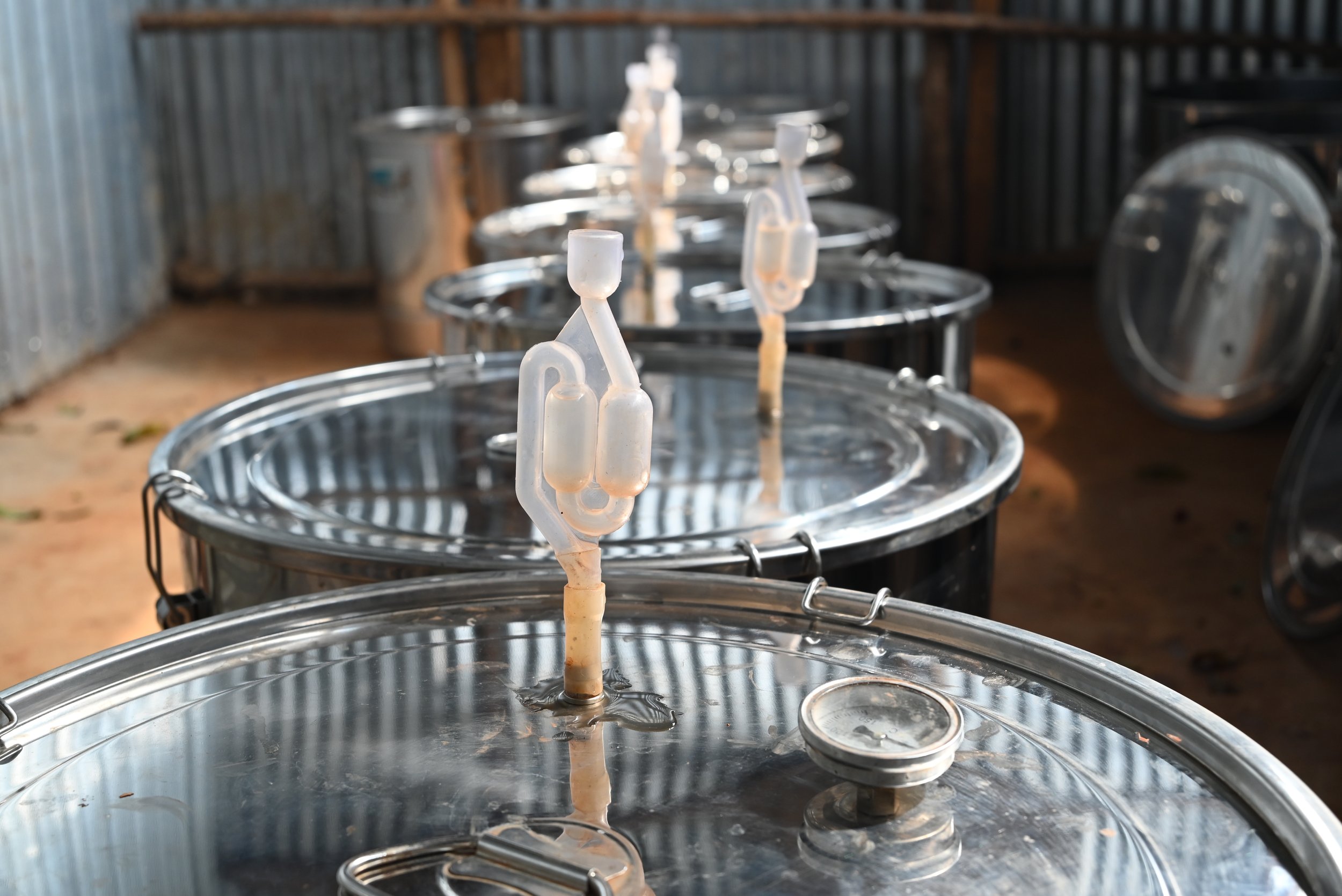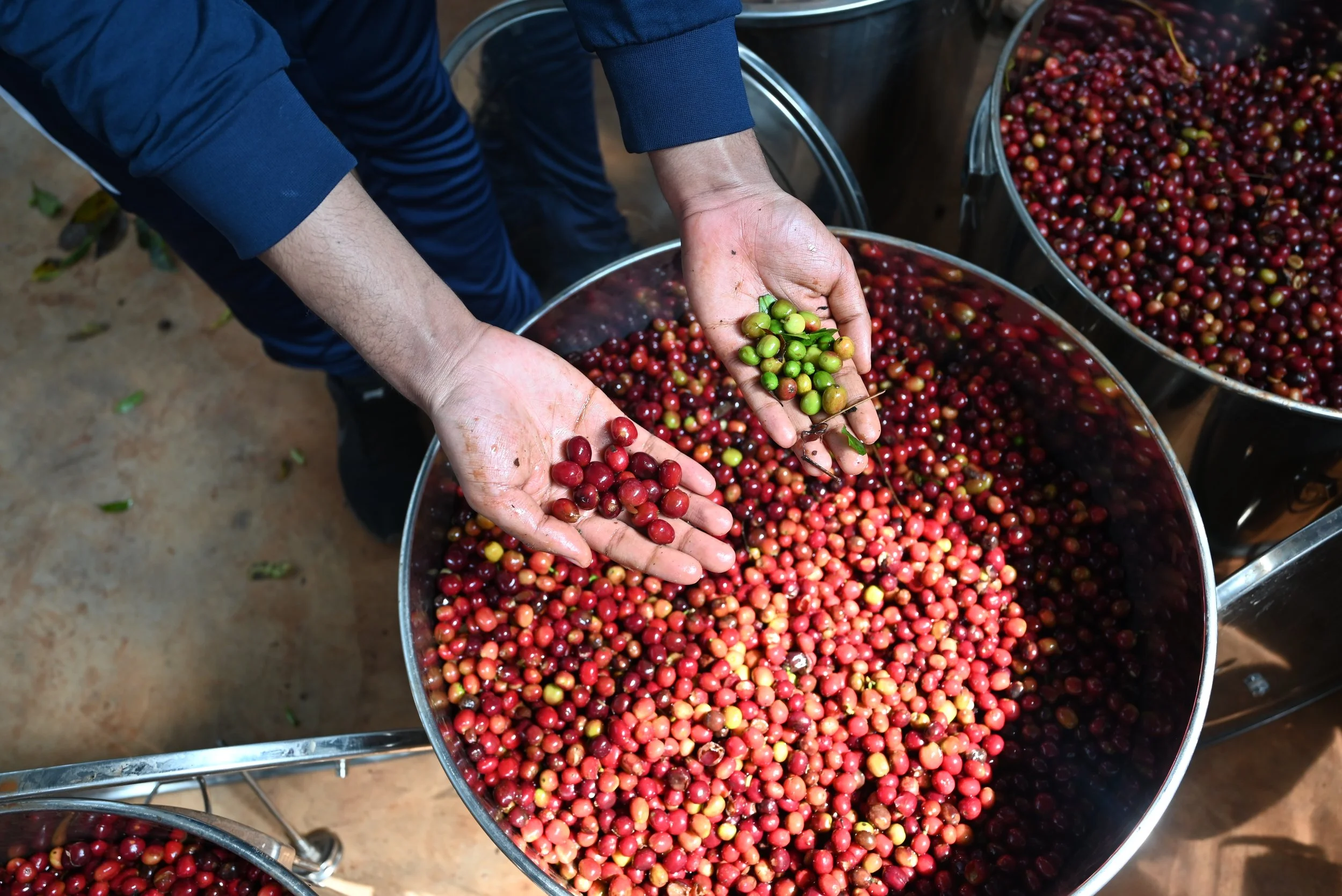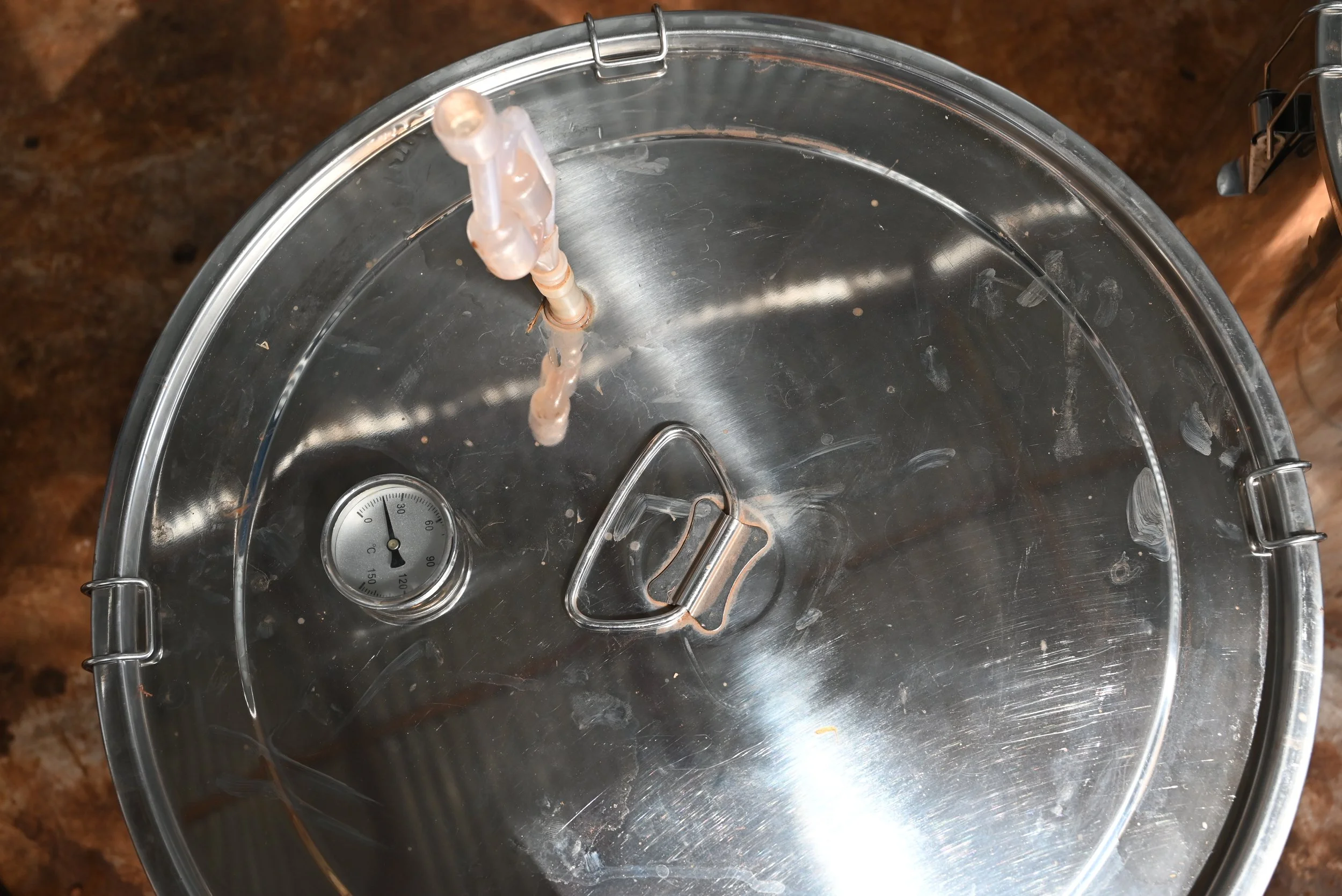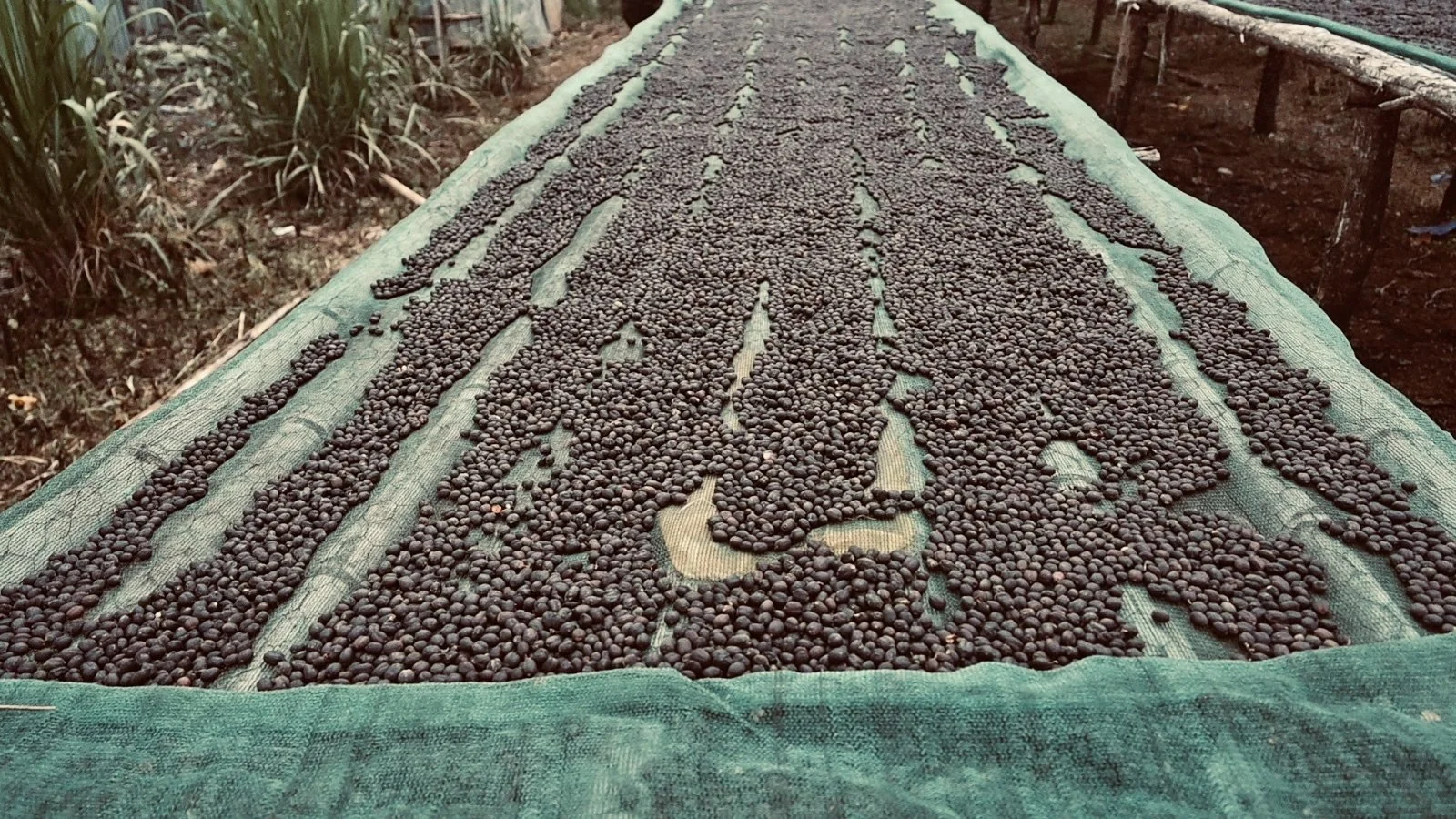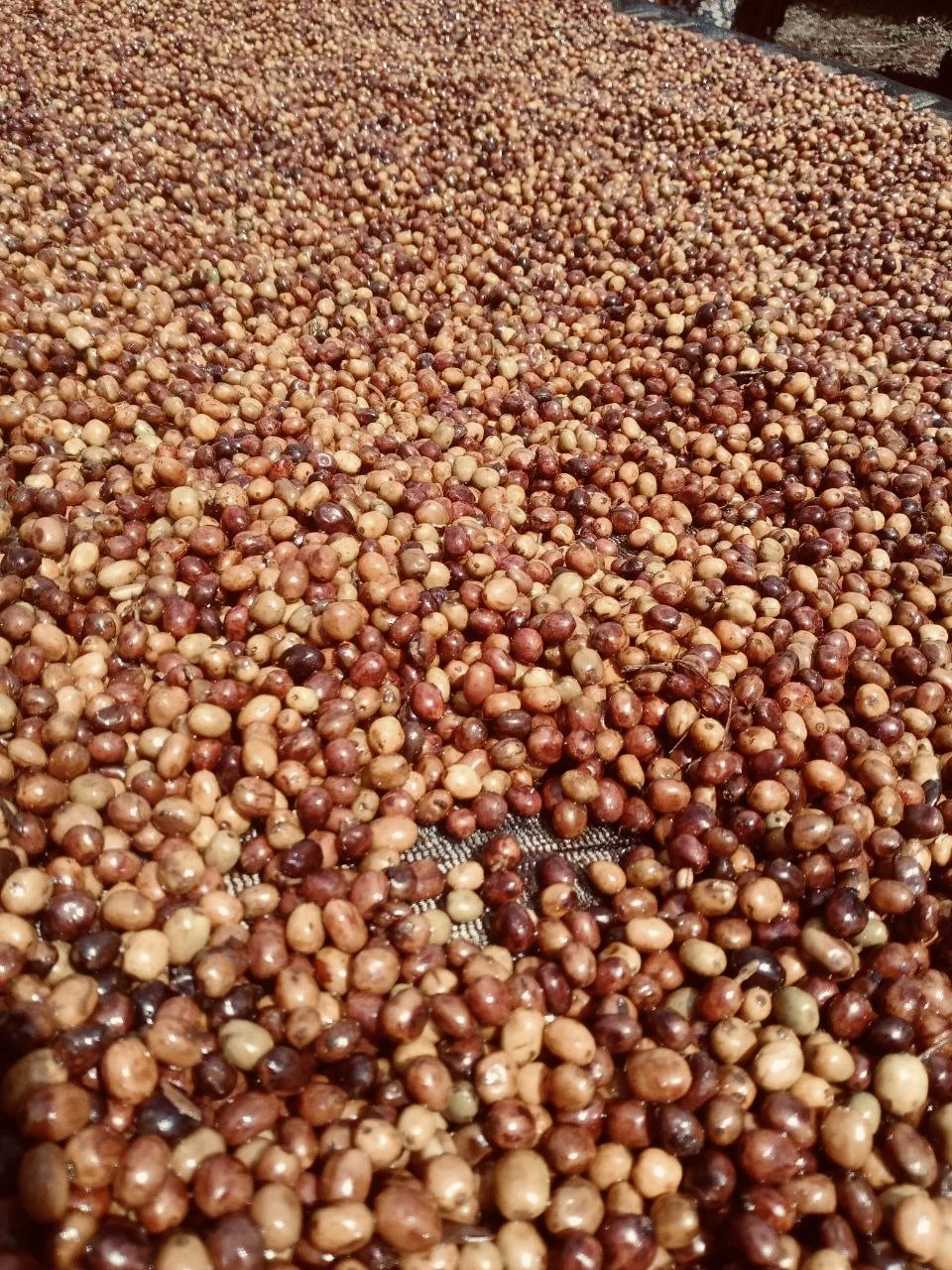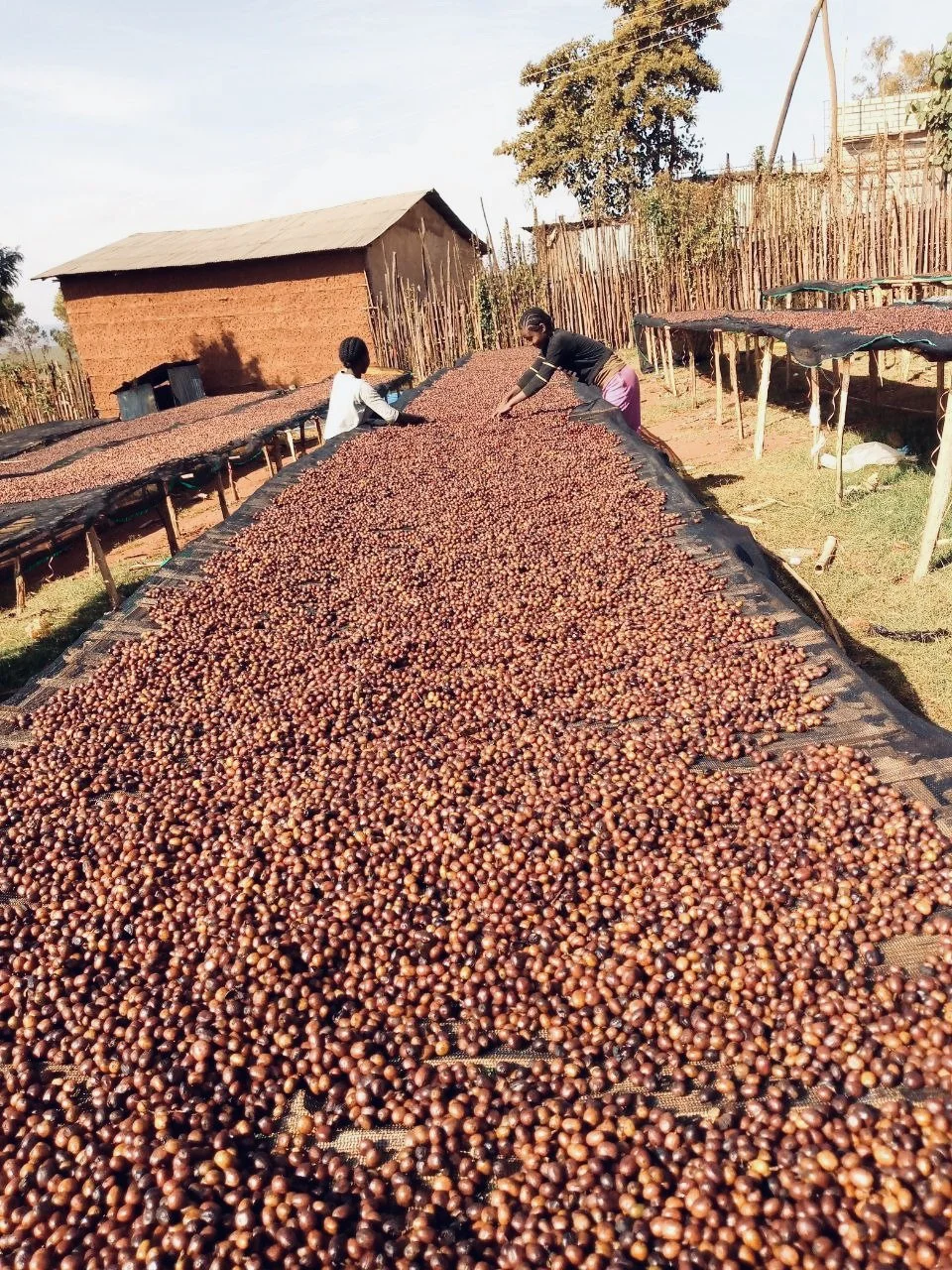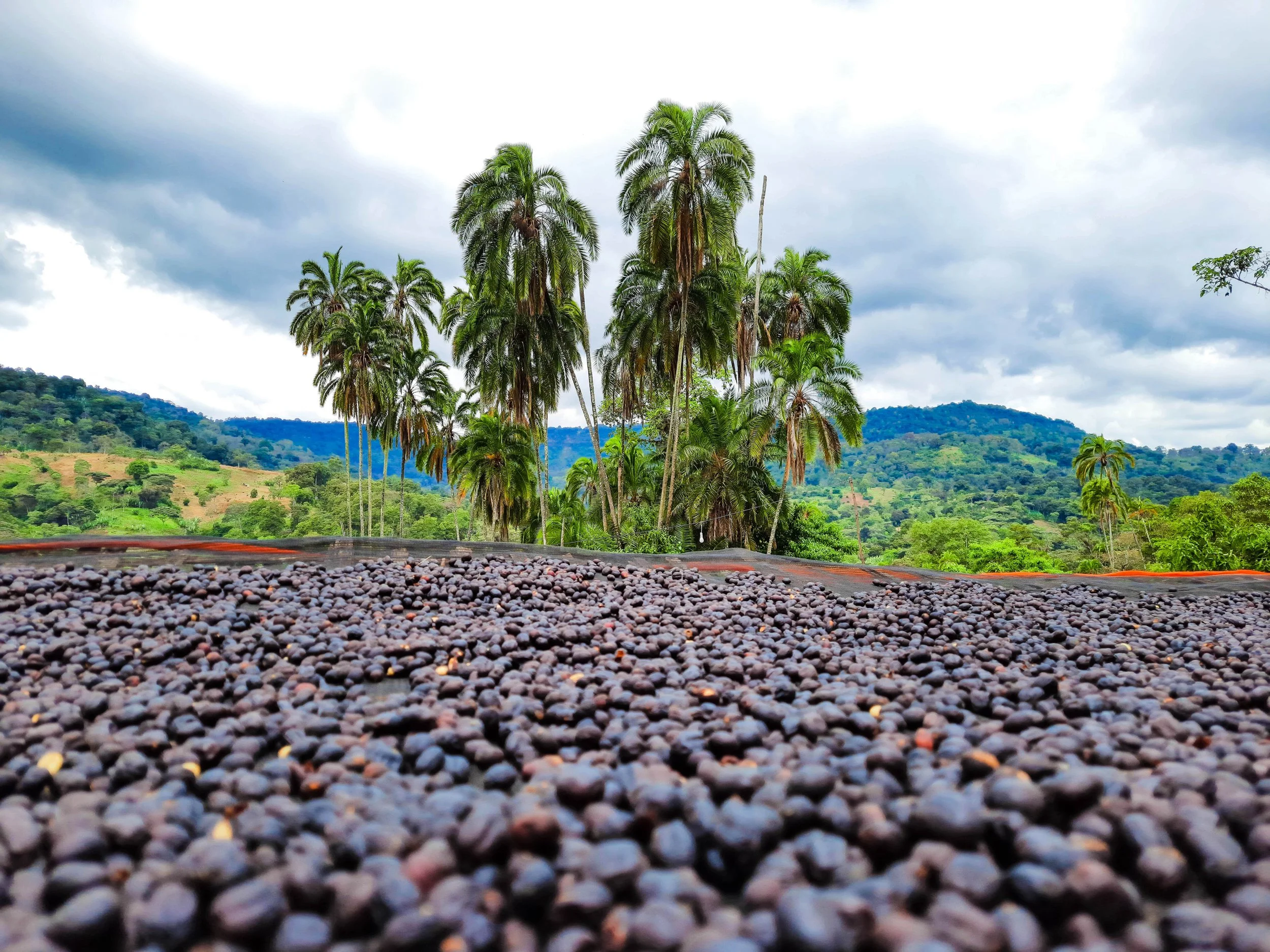GUJI HAMBELA CARBONIc MACERATION
GUJI HAMBELA CARBONIC MACERATION
Producers: Deri Kidame Kebele Smallholders (Deri Kidame Washing Station)
Mill/Washing Station: Deri Kidame Washing Station by Tracon
Bag Size: 60 Kg Grainpro
Region: Guji Hambela Wamena - Oromia Region
Elevation: 2,200 MSAL
Grade: 1
Variety: 74110, 74112 & Local Landraces
Process: Carbonic Maceration
Carbonic Environment Fermentation Time: 72 Hours
Drying Time: 21 Days on raised beds
summary
Tracon’s reputation is well regarded and are no strangers among COE members globally. In 2021, Tracon chose to participate in Ethiopia’s second ever Cup of Excellence Auction and had 2 different coffees score an impressive placement in the top 20 of all the coffees submitted in the Ethiopia COE Auction. In 2021, a record-breaking number of entries 1,849 for any countrywide Cup of Excellence competition entered the competition to compete that particular year. Placing in the best of top 20 coffees produced in Ethiopia should speak volumes for itself..
Tracon is a family owned business who owns a total of 30 washing stations located around Ethiopia. All experimental coffees are processed at Tracon’s own washing stations. First, local farmers collect cherries from the surrounding kebele (village) of Deri Kidame and deliver to the local Washing Station. The Deri Kidame Washing Station is managed by Kenzu Ahmed. Kenzu provides oversight and management of all the experimental projects for Tracon at Deri Kidame. During the harvest season, daily operation mainly consist of providing oversight over cherry selection, post harvest production and compensation distribution directly to their local farming partners.
Tracon has developed a state of the art modern coffee cleaning and milling facility in Addis Ababa where the coffees are all transferred for final milling following the initial collection and post harvest production phase of all their coffee. The facilty is equipped with the latest Pinhalese coffee processing equipment to sort coffees by density, size and also utilize high level pieces of automated equipment like optical color sorters for final sorting. Tracon also directly supports several of the local farming communities they work with by providing in depth training on modern farm management and harvesting practices with local farmers each year. Each lot contracted with Tracon this year was done on a prebook basis prior to the coffee harvest. We believe embracing this model equips partners with the tools and resources to provide early harvest premium payments directly to farmers and to help producers mitigate and calculate risk knowing they have a secured buying partner on the other end to support their efforts.
CARBONIC MACERATION
What does carbonic maceration consist of?
It is the prolonged fermentation which occurs within the cell structure of the coffee cherry. It consists of the chemical reaction that occurs when water mixes with the sugars present inside the cherry, causing the bacterias, yeasts and other microorganisms to break down the sugars and convert them into acids or alcohol.
What are the keys to reach ideal fermentation when the coffee has undergone Carbonic Maceration?
The entire coffee cherry is placed in a closed, airtight vessel that is generally a stainless steel tank, but plastic tanks or bags work as well. The goal and key component for this process is the ability to eliminate the presence of oxygen and fill the container with carbon dioxide (CO2). As the coffee ferments, bacterias will break down the sugars into carbon dioxide and alcohol. When there is enough carbon dioxide present in the vessel it will cause a significant rise in internal atmospheric pressure within the vessel, so an escape valve must be installed to release the pressure without allowing any oxygen to enter into the chamber. The duration of carbonic maceration ranges from a few hours to several days. The carbon dioxide prolongs fermentation by slowing the decomposition of sugars, allowing development of unique and uncharacteristic flavors to be detected, and if done correctly without the presence of any acetic vinegar notes typical of a long or over fermentation.
The pH slowly evolves as well, so there will be a lower acidity content of alcohol. Fermentation temperature and time play vital roles towards achieving successful results during processing. Carbonic maceration is not a new method to process coffee, but a step that can be included in washed or natural processing to extract more clarity and complexity in each coffee during processing. Washed carbonic maceration, the ripe cherries are harvested by hand, sorted and pulped before being placed in the sealed fermentation tank. In natural carbonic maceration, cherries are placed directly in the fermentation tanks, sealed and, after being processed, dried on raised drying beds until obtaining the adequate humidity levels.
PROCESSING
Once the cherries arrive to Tracon’s Deri Kidame Washing Station, they are submerged in clean water to wash out any possible dirt or contamination that could affect the development of bacteria inside the fermentation tank. Once all cherries are clean and classified by their density, the heaviest cherries are selected and placed inside the sealed fermentation tanks. After fermenting in the tanks for 72 hours, the coffee is then transferred to complete drying on raised drying beds for 21 days where the coffees are routinely raked and rotated by hand to assure consistent exposure and uniform drying during the drying phase.
JARC VARIETIES - 1974/1975 CBD RESITANT SELECTIONS
Currently the majority of coffee produced in Ethiopia is produced from three production systems: forest, semi-forest, and garden coffee. The level of variation among coffee varieties in the forest and semi-forest production systems are recognized as a higher degree of quality than garden coffee production systems. Farmers in Ethiopia have always had an interest in changing the genetic base of their varieties in different production systems in pursuit to improve coffee production and yield. The Jimma Agricultural Research Center (JARC) has made huge contributions to the global coffee community with its efforts over the past 40 years to expand knowledge through scientific research and studies in Ethiopia. In the efforts by the (JARC) to push towards revolutionizing the development of modern coffee varieties in Ethiopia they have created innovative methods to genetically combat CBD (coffee berry disease) and increase the overall efficiency in production and yield for coffees grown naturally in the forest and semi-forest production systems.
In 1971, coffee berry disease (CBD) was spreading throughout Ethiopia and likely had been around for years. Initial trials in 1972 used chemical-based fungicides to test prevention of the disease. While these proved successful, it was decided that a better solution would be to collect and use the broad genetic diversity of Ethiopian coffee to develop CBD-resistant varieties. The selection process for these varieties began in 1973 and resulted in collections from 19 locations in Southwestern Ethiopia. After collecting seeds from 639 different coffee trees originally collected in the areas of Gera, Metu-Bishari, Washi and Wush Wush for showing resistance against CBD. For 1974 and 1975 CBD resistant improved coffee varieties, if a variety name starts either with a 74 or 75 it is a selection number given to the variety and can represent a broader group of different varieties that stem from the 1974 and 1975 CBD Resistant Selection Group.
Gera Selection: 75227, 741
Metu-Bishari: 74165, 74158, 74112, 74148, 74140
Washi: 7487, 7454, 7440, 744
Wush Wush: 754
Variety Gibirinna 74110 & Serto 74112
The level of variation among coffee varieties in the forest and semi-forest production systems are recognized as a higher degree of quality than garden coffee production systems. The 74112 variety begins with “74” to indicate the official cataloging and selection in 1974. Variety 74112 originates in the Metu-Bishari forest and was released in 1979 from it's counterpart 74110 for its disease resistance and yield potential. The trees are smaller in stature and compact.
Farmers in Ethiopia have always had an interest in changing the genetic base of their varieties in different production systems in pursuit to improve coffee production and yield. The Jimma Agricultural Research Center (JARC) has made huge contributions to the global coffee community with its efforts over the past 40 years to expand knowledge through scientific research and studies in Ethiopia. In the efforts by the (JARC) to push towards revolutionizing the development of modern coffee varieties in Ethiopia they have created innovative methods to genetically combat CBD (coffee berry disease) and increase the overall efficiency in production and yield for coffees grown naturally in the forest and semi-forest production systems.
GUJI Zone landrace
KURUME (KUDHUME) VARIETY
Kurume was originally the name of the indigenous tree known for its small fruit size with good yearly yield. There is also a coffee variety (or varieties) in Gedeo with small fruit/bean size with smaller yields. As a result of the common features between the Kurume tree and the coffee variety, the name Kurume was also given to the coffee. This regional landrace is currently very well known among Gedeo and Guji coffee farmers. Kurume has a compact canopy and relatively small leaves with new growth that is generally green. Notable JARC variety selections 74110, 74112, 74148 and 74158 share similar morphological characteristics and could potentially be reclassified as Kurume “type”.
REGIONAL INFORMATION
Hambela Wamena, Guji Zone
Hambela Wamena is one of the woredas in the Oromia Region of Ethiopia. It is a part of the West Guji Zone and used to be a part of Uraga woreda. The farmers of this coffee are smallholder farmers which primarily focus on the cultivation of coffee on a small scale. Mainly, the farmers are from the village of Deri Kidame. This general area is located at a very high altitude in the region, on average the coffees selected are at an altitude of 2,200 MSAL.
Hambela Wamena is a renowned coffee-producing region located in the Guji Zone of southern Ethiopia. Situated within the Oromia region, Guji Hambela has become synonymous with producing very high-quality coffees. The area's unique climate, elevation, and soil composition contribute to the distinct flavors and characteristics that are notable to Hambela. The Guji zone is home to the Oromo people, which is one of the largest and oldest ethnic groups in Africa and has a significant presence in the Guji Zone. Oromo people have their own distinct language, culture, and traditions.
Alike to the other famous coffee growing areas in Guji, the coffee-growing environment in Hambela Wamena benefits from its high altitude, which reaches heights as high as 2,300 MSAL where coffee plants can be located. The region's altitude, coupled with the regions moderate temperature and ample rainfall, create optimal conditions for growing Arabica. The diverse microclimates within Hambela allow for the cultivation of various coffee varieties, resulting in a broad spectrum of flavors and profiles. The Guji Zone, including Hambela, is known for its rich biodiversity. The region's lush landscapes, high elevations, and diverse microclimates provide a habitat for various flora and fauna. This biodiversity contributes to the complexity of the coffee's flavors, as the surrounding environment plays a significant role in shaping the coffee beans' characteristics. The four major crops grown in the woreda are maize, wheat, barley and navy beans, as well as ensete or better known as the “false banana”.



